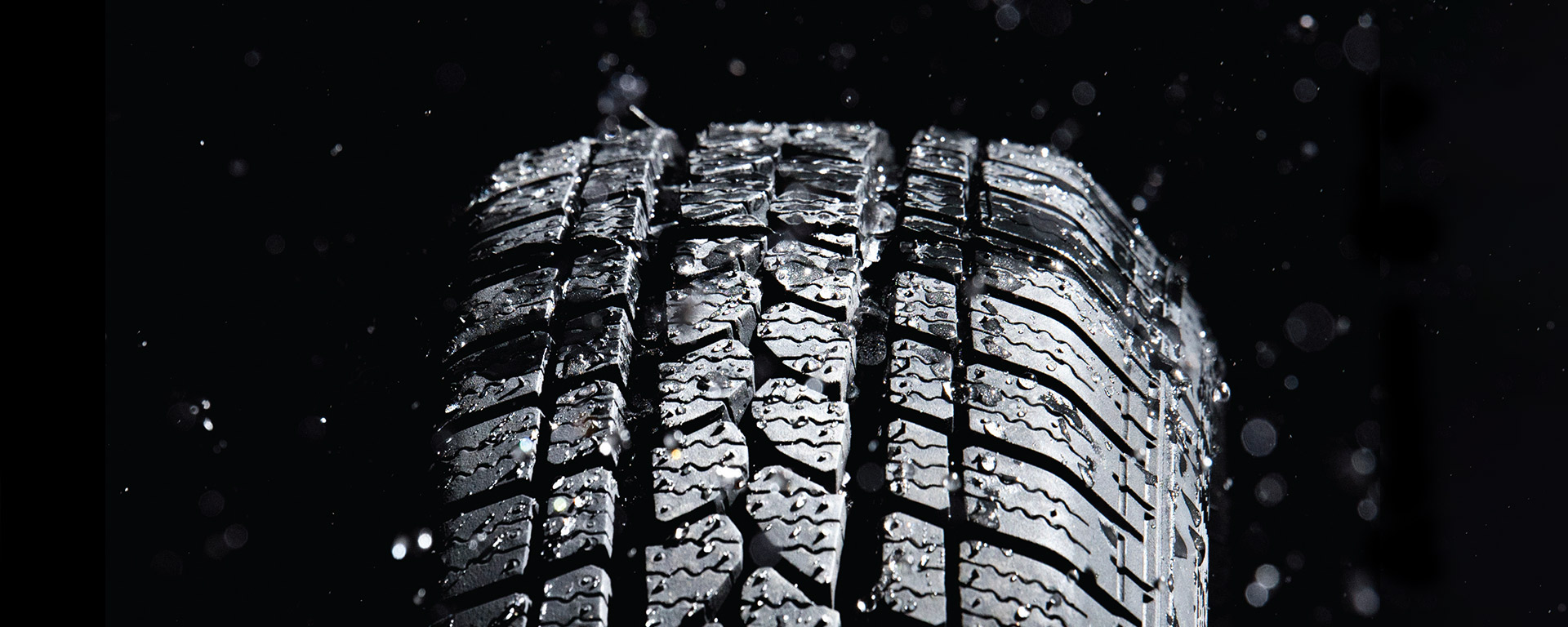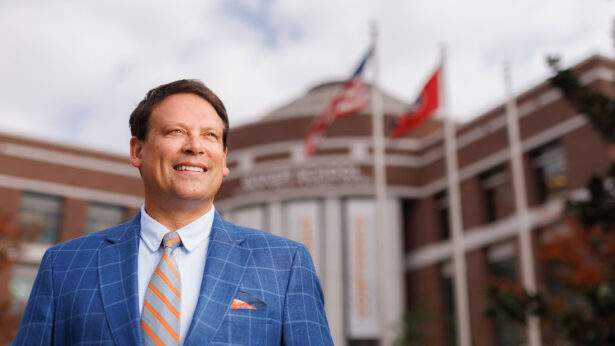In February 2018, a team from Eastman Chemical company visited Dayakar Penumadu’s materials research lab at the Institute for Advanced Composites Manufacturing Innovation (IACMI) at the University of Tennessee, Knoxville, Research Park at Cherokee Farms.
The Eastman team presented a challenging problem related to characterizing noninvasively the dispersion of additives. Sulfur, zinc oxide and silica are added to rubber during its compounding stage to improve its mechanical performance, tire longevity and durability. If components such as sulfur do not disperse well, it creates localized hard spots that attract mechanical and thermal stresses, causing the rubber-based tires to fail prematurely.
“From a material perspective, we look for ways to limit the wear on tires,” says Frederick Ignatz-Hoover, then an Eastman technology fellow in Akron, Ohio. “We asked, ‘How can we best measure how these additives are blended, mixed and dispersed?”
The standard method has been to cut out a sample of rubber, then look for the additives through an optical microscope.
“We were looking for someone with X-ray-computed tomography expertise,” says Ignatz-Hoover. X-ray-computed tomography, or XCT, is a nondestructive technique for visualizing interior features within solid objects and for obtaining digital information on their 3-D geometries and properties.
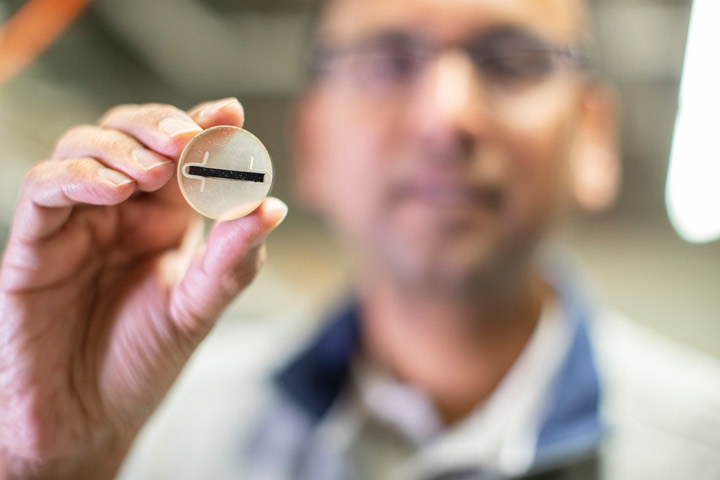
That someone would be Penumadu.
“We had been working with the U.S. Office of Naval Research on fiber-reinforced composite materials that have different components like polymer resin surrounding very high-strength fibers,” says Penumadu. “We developed the XCT methodology to characterize them to related structure-process-property relationships, and I saw some similarities and thought we could use a similar approach to visualize and quantify where the sulfur particles are distributed.”
A Record of Practical Solutions for Industry
Penumadu came to Knoxville in 2001, attracted by what he calls the innovation ecosystem of the partnership between UT and Oak Ridge National Laboratory. Today, he is the Fred N. Peebles Professor in the Tickle College of Engineering and the Institute for Advanced Materials and Manufacturing Chair of Excellence. He and his materials team have helped advance carbon-fiber technology to create lighter, stronger structures, vehicles and wind-turbine blades. One application was a lightweight “smart” bridge in Morgan County embedded with fiber-optic sensors that track vibration and stress and self-monitor the structural health.
Working with Volkswagen, Penumadu’s group developed a composite-material liftgate, which was 30 percent lighter and used two parts instead of 10, for oneof the company’s vehicles.
“That gave a starting point,” said Penumadu at the time, “for Volkswagen to realize that we are not just academic types who come up with a great idea and say, ‘Let someone else figure out how to make it work.’
“Instead, we took the ideas, we worked with them, and we came up with prototypes that they could demonstrate for their German counterparts.”
The Research Partners
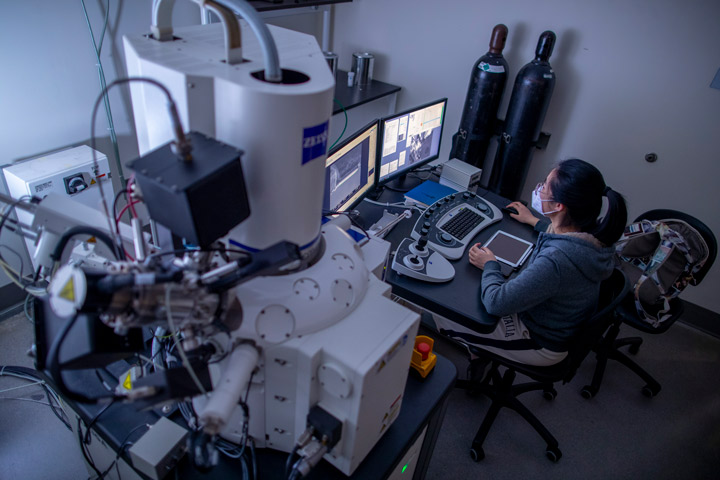
Eastman Chemical was founded in 1920 by Kodak founder George Eastman to ensure that he had the chemicals he needed for his customers to develop photos as motion pictures. Since then, Eastman has grown from its Kingsport chemical roots into a worldwide specialty materials company.
“Eastman realized the capabilities we have to offer,” says Penumadu, “and made the connection that we would be able to help with the research they had in mind of trying to figure out how best to quantify the dispersion of additives like zinc oxide and sulfur.”
Tire longevity and durability affects almost everyone on the planet. Eighty percent of the world’s rubber is used in the tire industry. (The rest is used in industrial rubber products, hydraulic hoses, gasoline hoses, power transmission belts, conveyor belts, motor mounts and bushings, O rings, medical applications and gloves.) Lately the tire industry is dealing with the pesky problem that electric vehicles are heavier and accelerate more quickly.
“Going from zero to 60 in an electric vehicle is so much easier,” says Ignatz-Hoover, “that acceleration creates higher torque and causes tires to degrade faster.”
Working Toward a Eureka Moment
With the challenge before them, Penumadu’s team went to work.
“Using a custom-developed technique building on X-ray tomography, we could noninvasively look at the additives in the material,” says Stephen Young, who earned his bachelor’s (’05), master’s (’09), Ph.D. (’13) degrees from UTK and did postdoctoral work in the university’s Tickle College of Engineering before transitioning to a project manager role in Penumadu’s group last summer. “We took a few scans to match up some of the raw materials, and they matched up really nicely with the actual components. In our research, we have a lot of capabilities for multi-scale investigations. We can analyze a problem from the macro level all the way to the atomic level and start evaluating at each length scale.”
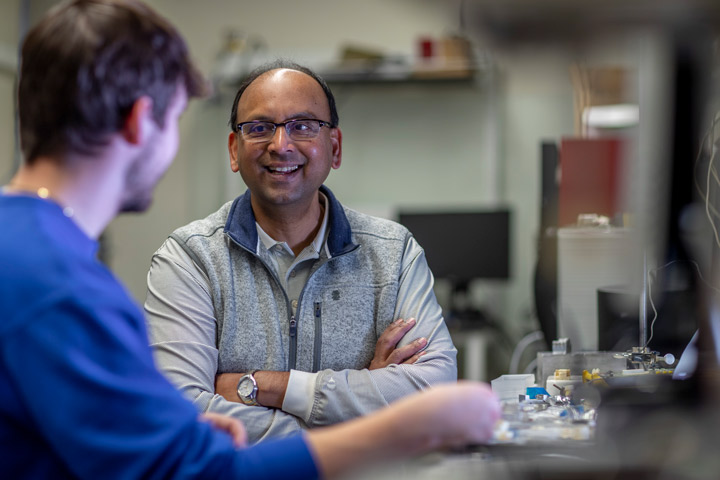
Penumadu had a eureka moment in January 2019, when he figured out how to make X-ray computer tomography work for characterizing rubber material and its impact on performance. X-rays that pass through the sample are scattered and absorbed differently, depending on the materials they interact with. A computer then reconstructs a digital 3D model of the rubber’s interior by visualizing this contrast from attenuation and phase information.
“He figured out how to make it work,” says Ignatz-Hoover.
Peter Chapman, an Eastman Kingsport senior chemist who earned his Ph.D. from UT Knoxville in 2008, helped with the optical method of analysis of the X-ray and the programming and development of the numerical assessment.
“He took the data from the insoluble sulfur particle centers and put it into a spreadsheet,” says Ignatz-Hoover, “so we can tally the numbers in the particles-population distribution.”
A Concrete Effect on the Industry
The team—master’s student Jun-Cheng Chin, Penumadu and Young from UT; and Chapman, Kingsport Technology Manager Tom Floyd, and Ignatz-Hoover from Eastman—published its findings in the journal Rubber Chemistry and Technology. Their paper, entitled Sulfur Dispersion Quantitative Analysis in Elastromeric Tire Formulations by Using High Resolution X-Ray Computed Tomography, won the journal’s 2021 Publication Excellence Award, has had 226 downloads and a year later is still among the journal’s most read papers.
“By working on real industry problems,” says Young, “it enables us to build a story, build relationships and solve a lot of questions.”
A podcaster from Thailand—source of 37.5 percent of the world’s rubber, more than any other nation—came to Penumadu’s lab for a one-hour interview now being heard worldwide.
“This is going to have a concrete effect on the industry,” says Ignatz-Hoover. “People in science are really interested in this technique.
“It was a pleasure to work with Dayakar and the university. He’s a fantastic scientist who understands his techniques extremely well. He was quite able to help develop a method to quantitatively assess the extent of sulfur dispersion. It was a wonderful collaboration. Obviously, it was very fulfilling for us and, as far as I’m concerned, exceeded our goals in terms of what we were able to do.”
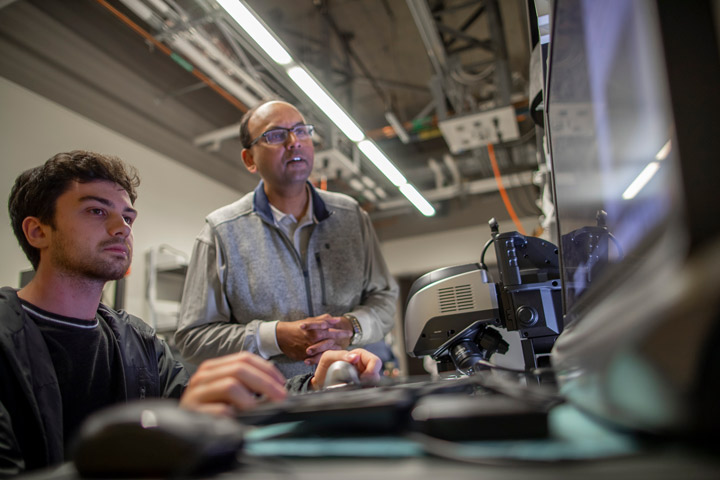
Says Penumadu, “It’s important for us that we had the privilege to solve this important problem because they came to us. This relationship and research opportunity creates concrete benefits, continuing science-wise as well as being a practical, real application that will improve safety and economics.
“In our group, we don’t just work with theoretic research. We are very fortunate to work on solving problems for big companies with real applications. This solution also gives an industry such as Eastman Chemical an incentive to advertise that their additives chemistry is unique, and they are able to show technical superiority and related commercial interest from this methodology.”
